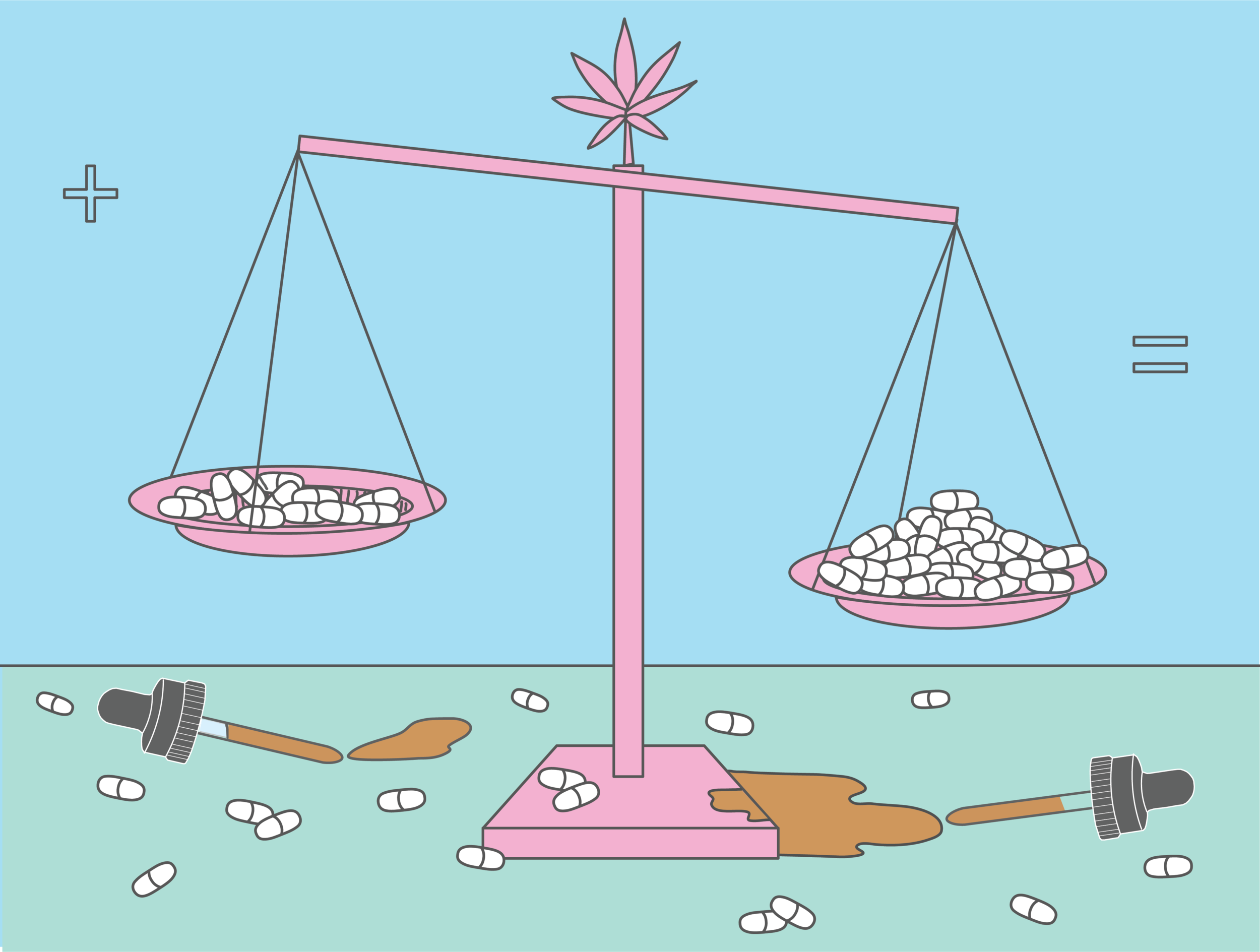Dosing and Tolerance
Finding the correct dose in cannabis can be tricky business, and not only for beginners! Everyone’s tolerance is so unique, how do you find your own sweet spot? What happens if you miscalculate? What happens if you get “too high”?
In today’s post, we’ll try to showcase different kinds of cannabis tolerance, explain why mode of consumption matters, and try to give you all the information you’ll need to make an educated decision about your personal dosage journey, as well as some advice for what to do if things go differently than expected. In this post, we’ll be focusing on THC, as this is the psychoactive cannabinoid that most are trying to manage when considering their dosage.
Tolerance
To start off, let’s discuss tolerance. Tolerance in cannabis isn’t just about how much cannabis you use, it’s also about who you are, and how you use it. It’s true that for the most part, the more you use, the higher your tolerance becomes, but it’s not as simple as that. Some seem to just live in a high tolerance world, even if they rarely use cannabis. Some use cannabis every day and their tolerance is persistently low. Determining your own tolerance is a personal journey; as you embark on it, we recommend you establish your own comfort level and take your time, and don’t take anyone else’s experience as a prediction of how you might feel.
To further discuss tolerance, we also have to discuss mode of consumption. Cannabis comes in many forms, and people tend to have very different tolerances for different modes of consumption. For example, someone who smokes joints all day every day might still have a low tolerance for edibles, or vice versa. There are some scientific reasons for this, and some more speculative ideas as well.
Modes of Consumption
The mode of consumption of cannabis has a huge impact on the effect the user might feel, and each person’s preference of mode of consumption is likely based on this difference. To explain why this might be, we have to look at how cannabis enters the bloodstream with each mode of consumption.
Smoking
When smoking cannabis, the (non psychoactive) THC-A in the cannabis plant is converted to (psychoactive) THCΔ9 upon combustion. Then the THCΔ9 is inhaled into the lungs, where it is directly transferred into the bloodstream via capillaries. When the THC in your blood reaches your brain, this is when the psychoactive “high” becomes apparent. This direct transfer to the bloodstream is why the onset is quicker when smoking compared to eating cannabis. It’s also easier to dose this way because the effect is more immediately apparent.
Sublingual Consumption
Sublingual consumption is the act of holding the substance under the tongue for 60-90 seconds. This is the most common form of consumption of tinctures, and when done correctly, usually results in a 10-20 minute onset time. Sublingual consumption, like smoking cannabis, absorbs directly into the bloodstream through the many surface capillaries under the tongue and in the gums.
Eating
Eating cannabis follows a much different pathway than smoking or sublingual consumption, and can be more difficult to predict and control. When eating cannabis, the THCΔ9 is first filtered through the liver, which is known to convert THCΔ9 to THCΔ11. THCΔ11 is a less-studied isomer of THC, and while it’s unclear how exactly it differs from THCΔ9, it is considered to be potentially more potent. That said, what is anecdotally accepted is that while some people are hypersensitive to eating cannabis, some folks are oppositely almost entirely unaffected by eating cannabis. This difference might be because of how an individual’s body responds to THCΔ11. The onset time for eating cannabis usually ranges between 30 minutes and 2 hours, which is why this method can be more difficult to control than other methods. It’s also important to note that for many people, having an empty or full stomach can change the effect and onset time when eating cannabis.
Types of consumable cannabis
Another factor (that we won’t go into much detail on here) is the type of extract or flower you’re consuming, which you can learn more about in our other blog post entitled “What Does Full Spectrum Mean?” We highly recommend giving that a read through, because the combination of cannabinoid(s), as well as other compounds can also make a big difference in your experience.
Finding your dose
One of the most reassuring aspects of a regulated cannabis market is that every product must be tested for potency and homogeneity, and labeled with accurate potency results. This makes accurate and controlled dosing much easier. For most first-time users, 1-2mg of THC is a good place to start and increase as needed.
The methods of consumption above are important to understand as this knowledge can help you make sense of how your body processes cannabis. If you’re not feeling the effects of your first dose, it’s important to know what the expected onset is. A common mistake, especially with edibles, is to take a second dose while waiting for the effects of the first one, and then feeling overwhelmed when both doses come on. We always recommend starting with a small dose and then waiting for about double the expected onset before taking more. This should help you get a good idea of 1) your individual onset time, and 2) your individual threshold.
I’m too high! Now what?
Miscalculations and mistakes can happen! Don’t fear, we recommend taking the following steps if you are feeling overwhelmed or “too high:”
1. Take a deep breath
The most important thing to remember if you’re too high is that it will pass. Some people experience anxiety and increased heart rate, which can be alarming, but ultimately, your immediate safety is not in jeopardy if you take too much cannabis for your comfort. There are zero reported cases of cannabis overdose.
2. Do not drive or operate any kind of machinery
It is never recommended to drive while under the influence of cannabis, but this is especially true if you fear you’ve taken too much. If you need to get home, make sure you find a safe ride!
3. Distract yourself
Often the most uncomfortable aspect of being “too high” is the intensity of your thoughts and feelings. Many people find that listening to or playing music, watching a movie, or drawing can help direct their thoughts and bring them back into a more comfortable mindset.
4. Balance it out
THC’s non-psychoactive cousin, CBD, can help! THC and CBD both utilize the same receptors in the brain, so supplementing with CBD can help saturate those receptors and push the THC out of your system. Make sure that if you are taking more cannabis, that it has a ratio of at least 20:1 CBD to THC. You do not want to take any appreciable amount of THC if you’re already feeling uncomfortably high.
5. Sleep
If all else fails, try to sleep it off!
Here at Proof, our products range all across the spectrum from nearly-non-psychoactive to extremely psychoactive, because we know that each consumer has differing needs and desires. Please visit our products page to learn more about ratios, potency, and dosage to start your own cannabis journey.

